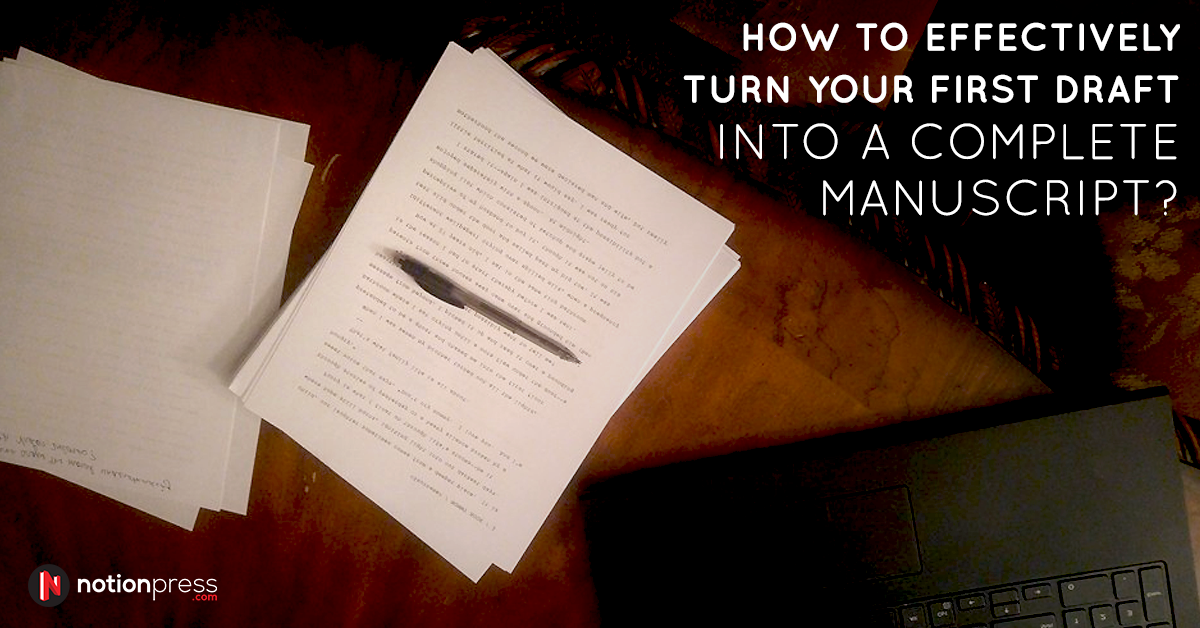How to Effectively Turn your First Draft into a Complete Manuscript
The feeling you experience when you complete a novel could be anything from exhilaration or relief, to even anxiety. Yes, you will be relieved because you finally completed that novel. However, the thought of what’s next could scare you a lot. Most writers, especially first timers, think that the first draft is the final version that is sent to publishers or editors. Well, the truth is, NO! It is a rough version that needs to be turned into a manuscript. Here are 11 things that you need to do to turn your first draft into a manuscript:
- Read it!
Read your first draft the way it is. You may choose to edit it along the way or just read alone – it’s up to you. However, we would suggest that you read it without making any major edits. Correct typos, add punctuations, etc. Do not make any structural or contextual changes.
- Create the second draft
No matter whether you are a debutant or a best-seller, your novel’s first draft is usually just a clutter of all your thoughts. At this stage, you need to expand your ideas and give them shape. It is acceptable to add or delete content since you’ll have a better understanding of the plot and characters by now. In case of any uncertainty, you may leave a comment in the draft that can be attended to at a later stage. This gives you time to reflect upon the idea further. Do not worry if your second draft varies from your first.
- Rewriting and redrafting
This is where you write the third, fourth drafts, and so on. When you are satisfied with the fine-tuning, format the novel in terms of font, size, colour, line spacing, chapter titles, paragraph breaks/indents etc. Proofread it further to correct minor changes if necessary.
Read our blog on “A definitive guide to writing and publishing an anthology.”
- Print the novel
Printing out your novel is a tried and tested method that helps you spot errors quicker and easier. Reading on paper is less stressful to the eyes and also gives you a preview of how your writing will look on print. You can make handwritten notes on the draft and incorporate them in the soft copy once you’re done.
- Find an editor
This step can be excluded if you are planning to take editorial services from your publishing house. On the other hand, if you want to have your own editor, then do not delay it beyond this point. While choosing an editor keep in mind:
- Language is ever-evolving, so please keep in mind your editor’s suggestions, because they will be better aware of the vocabulary and grammar that is currently in use.
Your editor must be experienced. You can be a debutante, but it is wise to choose an editor who has the required skillset to help prune your work.It is essential to communicate with your editor at different points, in case you have a conflict of interest with him/her. This will help avoid friction at the last moment, before you go to print. There are a plenty of freelance editors whom you can hire. Alternatively, you can also choose editing services as a part of your book publishing process, depending on your preferences and convenience.
- Find beta Readers
Beta reading is a process where you give your manuscriptto a non-professional reader to evaluate from a third person’spoint of view. You can also send your book to a critique group that reviews books or to your bibliophile friends. A beta reader will give you feedback on your manuscript and check for errors, such as spelling or grammar. It is always helpful to give a checklist of questions you’d like them to answer regarding the manuscript, and request that they leave comments on the side instead of within the copy. After the reader provides their feedback, always remember that it must be passed onto an editor for professional guidance.
- Consolidate all the edits
Take the beta reader’s opinions into consideration and check if the suggestions can be implemented into your manuscript. Consolidate the changes proposed by them and your editor to finalize your manuscript.
- Proofreading
The nextstep an author must do before sending his manuscript to the publisher is toproofread it. This requires time and patience, so make sure you do not rush it or are tired before you start. If necessary, you could print this version as done earlier, for ease of reading and spotting errors. Read throughmultiple times, as some errors might miss your attention in the first round. Additionally, ask your editor to proofread your manuscript before you send it for print.
- Send your manuscript to the publisher
Once you are satisfied with the manuscript, send it to the publisher.Make sure to take the submission guidelines of the publishing house into consideration before you send it to them.At this juncture, the work from your end is almost complete. Designing the book cover, typesetting (choosing font, size etc.) and interior design (how the layout of the book would look on the inside) would follow and usually, you can let the publisher take care of the first three aspects. Once these elements have been finalized, you could begin working hand-in-hand with them to market your book effectively across various platforms.
Got a story to tell the world? Start writing and get published now.






